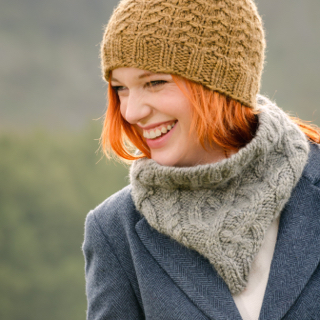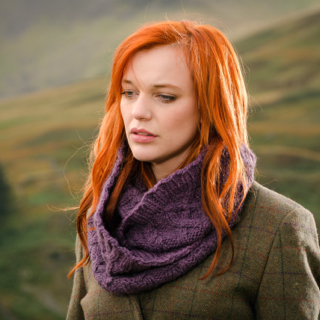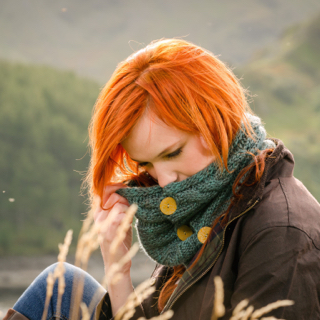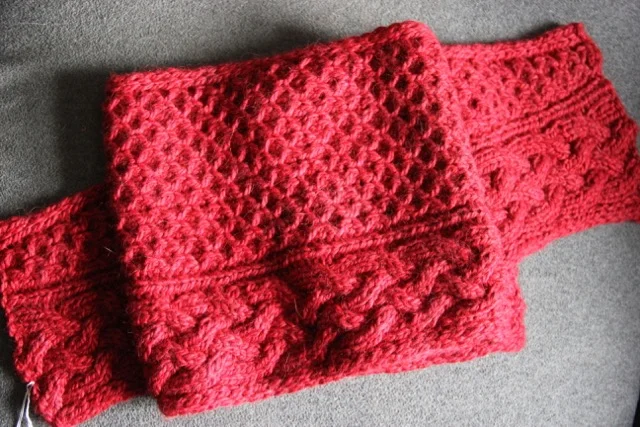THE NORDLÁNDDA COLLECTION: Nøss and Heggelia
When I was brainstorming about the pieces to include in the Nordlándda collection, I wanted to include some projects that were suitable for new cable knitters. The first piece that fits this bill are the Nøss mitts.
Copyright 2015 The Fibre Co. & Tommy Martin
These super simple little mitts are worked in the round from the bottom up, and feature a very small, 2 stitch cable on either edge. Since the cables are only two stitches, this is a perfect pattern if you'd like to try cabling without a cable needles.
I've got some handspun London Fog Bluefaced Leicester spun up that I'm using to cast on my own pair of Noss mitts at Knit Night tonight - the pattern takes less then 120 yards for all sizes, but I've only got 85 yds of handspun. I'm still going to try to squeak out a medium pair for myself - stay tuned for future Yarn Chicken games!
The second pair of mitts in the collection are the super scrummy Heggelia gauntlets.
Copyright 2015 The Fibre Co. & Tommy Martin
I just love these mitts - long and cosy to protect against any intrusive winter winds, worked in reverse stockinette for interest with a big bold cable running down the back of the hand and arm. This is also a good potential no-cable-needle project - the cable looks complicated, but all of the cable crosses are worked over four stitches, so its just a step up from the Nøss mitts in terms of cabling complexity.
The Heggelia mitts come in two sizes, and use up to 240 yards of bulky yarn. I want to do a handspun pair of these too, but I'm going to need to spin up some yarn for them specifically. I'm not such a pink person generally speaking, but it is a colour that works well with the design! Maybe I'll have to bite the bullet and stay in keeping with the original sample...
There's still plenty of time to join in the #AYSWinterCablesKAL on Instagram and over at the A Yarn Story group on Ravelry. We'd love to see your projects!
Note: If you are in Europe and would like to purchase one of the patterns from the collection without paying VAT, please go to the Nordlándda page and be sure to include your Ravelry ID (if you have one) when you check out. The pattern will be emailed to you and put into your Ravelry library. Thank you!
















